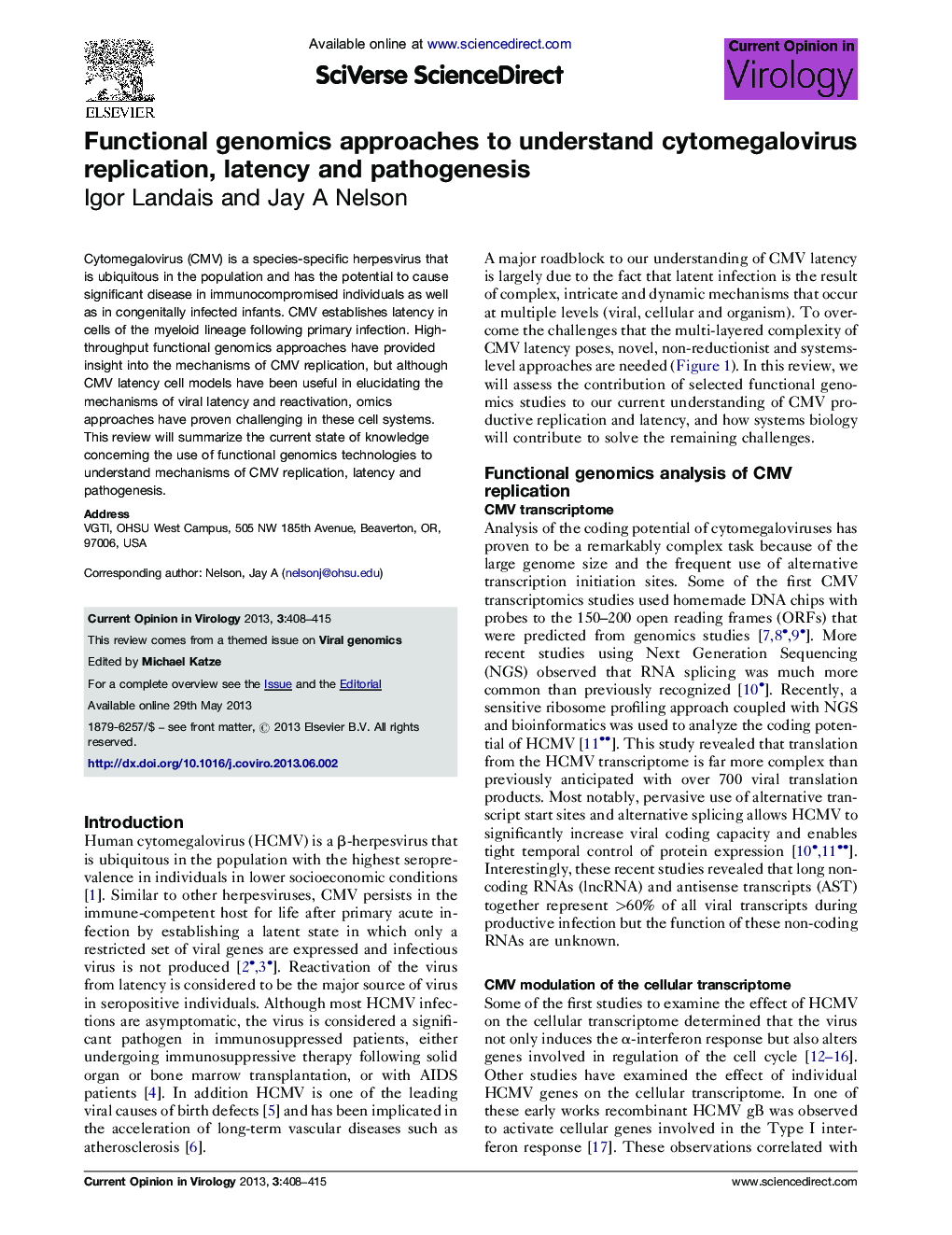| Article ID | Journal | Published Year | Pages | File Type |
|---|---|---|---|---|
| 5806859 | Current Opinion in Virology | 2013 | 8 Pages |
â¢Omics approaches have provided valuable insight into CMV replication mechanisms.â¢Omics tools helped define the CMV transcriptome, proteome, metabolome and lipidome.â¢Current CMV latency models pose significant challenges to omics analysis.â¢Recent advances in sensitive omics tools could bolster our grasp of CMV latency.
Cytomegalovirus (CMV) is a species-specific herpesvirus that is ubiquitous in the population and has the potential to cause significant disease in immunocompromised individuals as well as in congenitally infected infants. CMV establishes latency in cells of the myeloid lineage following primary infection. High-throughput functional genomics approaches have provided insight into the mechanisms of CMV replication, but although CMV latency cell models have been useful in elucidating the mechanisms of viral latency and reactivation, omics approaches have proven challenging in these cell systems. This review will summarize the current state of knowledge concerning the use of functional genomics technologies to understand mechanisms of CMV replication, latency and pathogenesis.
